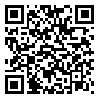BibTeX | RIS | EndNote | Medlars | ProCite | Reference Manager | RefWorks
Send citation to:
URL: http://jhsw.tums.ac.ir/article-1-5588-en.html
2- Assistant Professor, Occupational Health Engineering, Research Center for Health, Safety and Environment (RTHSE), Alborz University of Medical Sciences, Karaj, Iran ,
3- Associate Professor, Occupational Health Research Center, Iran University of Medical Sciences, Tehran, Iran
4- M.Sc., Department of Occupational Health Engineering, Shiraz University of Medical Sciences, Shiraz, Iran
Introduction: Metro driving is one of the newest jobs in Iran. There are few studies in this field. Therefore, the physical workload and their influencing factors have not been identified in metro driving. The objective of this study was task and physical workload analysis of metro driving to recommend control measures.
Material and Method: In this mixed method study, task analysis and Quick Exposure Check (QEC) were used to assessment of physical workload in metro driving. Different methods and techniques including field investigation, document reviews, individual and focus group interviews, and focus group discussions were used to analysis physical workload to recommend control measures.
Result: Whole body exposure with physical workload was assessed unacceptable in metro driving. Although the exposures in back, shoulder/arm and hand/wrist were under threshold 70%, neck exposure lead to over physical workload in the whole body. Many themes include unsupported body; non-sufficient view on the track and on displays; awkward posture and unsuitable layout were extracted as significant factors influencing on physical workload.
Conclusion: An intervention plan was recommended to a) support body by chair, platform and footplate; b) optimize a sufficient view on the track and on displays; c) maintain body postures in seating position with easy reaching distance and sufficient view; and d) design a suitable layout for driving panel regarding to controls, keys and displays.
Received: 2017/03/5 | Accepted: 2017/03/5 | Published: 2017/03/5
| Rights and permissions | |
 |
This work is licensed under a Creative Commons Attribution-NonCommercial 4.0 International License. |





